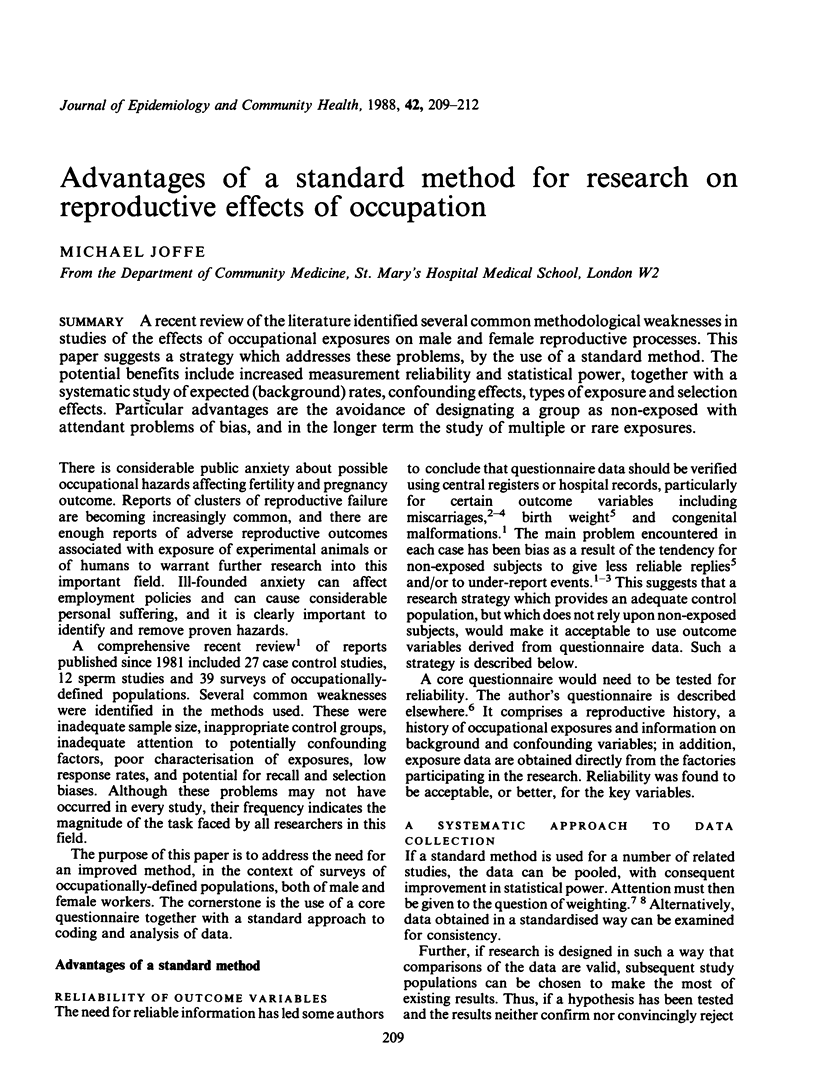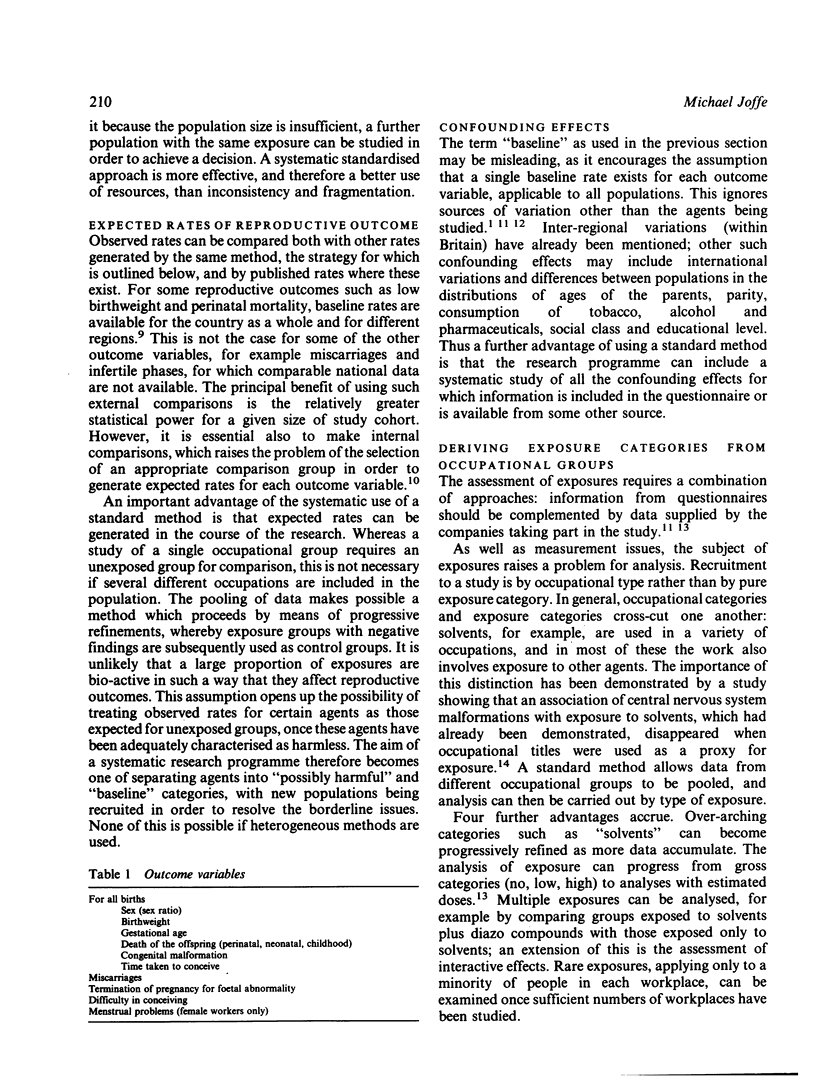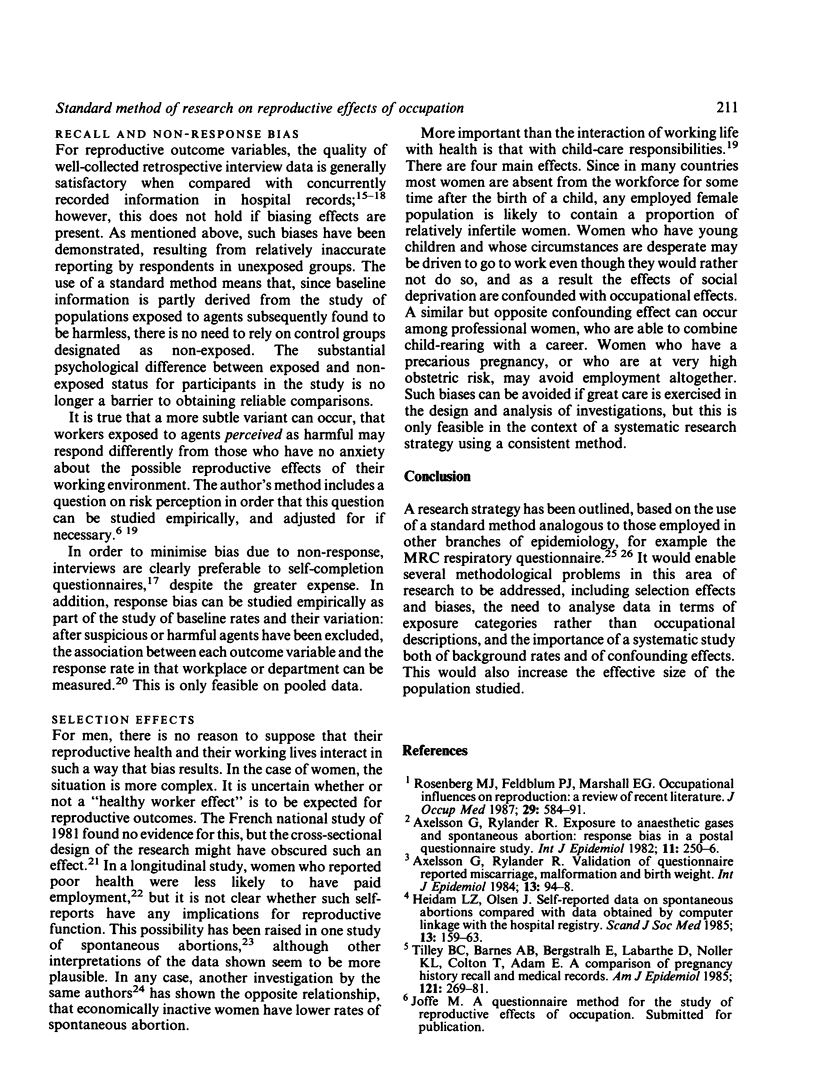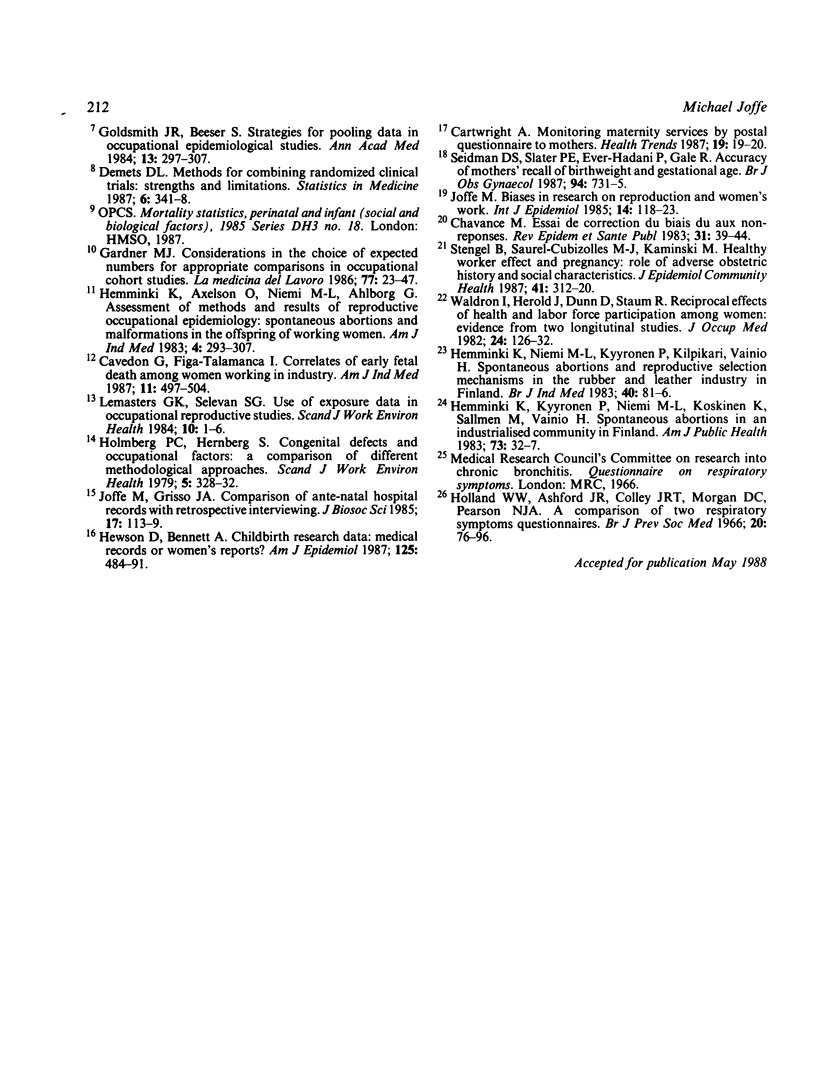Abstract
A recent review of the literature identified several common methodological weaknesses in studies of the effects of occupational exposures on male and female reproductive processes. This paper suggests a strategy which addresses these problems, by the use of a standard method. The potential benefits include increased measurement reliability and statistical power, together with a systematic study of expected (background) rates, confounding effects, types of exposure and selection effects. Particular advantages are the avoidance of designating a group as non-exposed with attendant problems of bias, and in the longer term the study of multiple or rare exposures.
Full text
PDF



Selected References
These references are in PubMed. This may not be the complete list of references from this article.
- Axelsson G., Rylander R. Exposure to anaesthetic gases and spontaneous abortion: response bias in a postal questionnaire study. Int J Epidemiol. 1982 Sep;11(3):250–256. doi: 10.1093/ije/11.3.250. [DOI] [PubMed] [Google Scholar]
- Axelsson G., Rylander R. Validation of questionnaire reported miscarriage, malformation and birth weight. Int J Epidemiol. 1984 Mar;13(1):94–98. doi: 10.1093/ije/13.1.94. [DOI] [PubMed] [Google Scholar]
- Cartwright A. Monitoring maternity services by postal questionnaires to mothers. Health Trends. 1987 Aug;19(3):19–20. [PubMed] [Google Scholar]
- Cavedon G., Figà-Talamanca I. Correlates of early fetal death among women working in industry. Am J Ind Med. 1987;11(5):497–504. doi: 10.1002/ajim.4700110503. [DOI] [PubMed] [Google Scholar]
- Chavance M. Essai de correction du biais dû aux non-réponses. Rev Epidemiol Sante Publique. 1983;31(1):39–44. [PubMed] [Google Scholar]
- Demets D. L. Methods for combining randomized clinical trials: strengths and limitations. Stat Med. 1987 Apr-May;6(3):341–350. doi: 10.1002/sim.4780060325. [DOI] [PubMed] [Google Scholar]
- Gardner M. J. Considerations in the choice of expected numbers for appropriate comparisons in occupational cohort studies. Med Lav. 1986 Jan-Feb;77(1):23–47. [PubMed] [Google Scholar]
- Heidam L. Z., Olsen J. Self-reported data on spontaneous abortions compared with data obtained by computer linkage with the hospital registry. Scand J Soc Med. 1985;13(4):159–163. doi: 10.1177/140349488501300406. [DOI] [PubMed] [Google Scholar]
- Hemminki K., Axelson O., Niemi M. L., Ahlborg G. Assessment of methods and results of reproductive occupational epidemiology: spontaneous abortions and malformations in the offspring of working women. Am J Ind Med. 1983;4(1-2):293–307. [PubMed] [Google Scholar]
- Hemminki K., Kyyrönen P., Niemi M. L., Koskinen K., Sallmén M., Vainio H. Spontaneous abortions in an industrialized community in Finland. Am J Public Health. 1983 Jan;73(1):32–37. doi: 10.2105/ajph.73.1.32. [DOI] [PMC free article] [PubMed] [Google Scholar]
- Hewson D., Bennett A. Childbirth research data: medical records or women's reports? Am J Epidemiol. 1987 Mar;125(3):484–491. doi: 10.1093/oxfordjournals.aje.a114554. [DOI] [PubMed] [Google Scholar]
- Holland W. W., Ashford J. R., Colley J. R., Morgan D. C., Pearson N. J. A comparison of two respiratory symptoms questionnaires. Br J Prev Soc Med. 1966 Apr;20(2):76–96. doi: 10.1136/jech.20.2.76. [DOI] [PMC free article] [PubMed] [Google Scholar]
- Holmberg P. C., Hernberg S. Congenital defects and occupational factors. A comparison of different methodological approaches. Scand J Work Environ Health. 1979 Dec;5(4):328–332. doi: 10.5271/sjweh.2650. [DOI] [PubMed] [Google Scholar]
- Joffe M. Biases in research on reproduction and women's work. Int J Epidemiol. 1985 Mar;14(1):118–123. doi: 10.1093/ije/14.1.118. [DOI] [PubMed] [Google Scholar]
- Joffe M., Grisso J. A. Comparison of ante-natal hospital records with retrospective interviewing. J Biosoc Sci. 1985 Jan;17(1):113–119. doi: 10.1017/s0021932000015522. [DOI] [PubMed] [Google Scholar]
- Lemasters G. K., Selevan S. G. Use of exposure data in occupational reproductive studies. Scand J Work Environ Health. 1984 Feb;10(1):1–6. doi: 10.5271/sjweh.2367. [DOI] [PubMed] [Google Scholar]
- Rosenberg M. J., Feldblum P. J., Marshall E. G. Occupational influences on reproduction: a review of recent literature. J Occup Med. 1987 Jul;29(7):584–591. [PubMed] [Google Scholar]
- Seidman D. S., Slater P. E., Ever-Hadani P., Gale R. Accuracy of mothers' recall of birthweight and gestational age. Br J Obstet Gynaecol. 1987 Aug;94(8):731–735. doi: 10.1111/j.1471-0528.1987.tb03717.x. [DOI] [PubMed] [Google Scholar]
- Stengel B., Saurel-Cubizolles M. J., Kaminski M. Healthy worker effect and pregnancy: role of adverse obstetric history and social characteristics. J Epidemiol Community Health. 1987 Dec;41(4):312–320. doi: 10.1136/jech.41.4.312. [DOI] [PMC free article] [PubMed] [Google Scholar]
- Tilley B. C., Barnes A. B., Bergstralh E., Labarthe D., Noller K. L., Colton T., Adam E. A comparison of pregnancy history recall and medical records. Implications for retrospective studies. Am J Epidemiol. 1985 Feb;121(2):269–281. doi: 10.1093/oxfordjournals.aje.a113997. [DOI] [PubMed] [Google Scholar]
- Waldron I., Herold J., Dunn D., Staum R. Reciprocal effects of health and labor force participation among women: evidence from two longitudinal studies. J Occup Med. 1982 Feb;24(2):126–132. [PubMed] [Google Scholar]


